John Hurrell – 27 November, 2015
Farquhar's paint application is raw - oily top surface, with lots of thin underpainting peeking through - in the manner of Kirchner or Heckel, while decorative qualities, like Klimt's cascading dots, abound. There is a busy daubing agitation throughout, via descriptive mimicking of stems, leaves, curling buds, dead petals or bark textures. The show's title is clever, referring to botany (especially trees or grasses), Roland Barthes' 'The Rustle of Language', and a sort of cosmic breeze.
This show of ‘abstract’ paintings takes Nicola Farquhar‘s image making process further away from the compositional symmetries of portrait painters like say, Rita Angus - though a few vestiges remain. The lush marks (still vaguely hinting at faceless heads) have now become more botanical, or figuratively oblique, than ever.
Farquhar‘s paint application is raw - oily top surface, with lots of thin underpainting peeking through - in the manner of Kirchner or Heckel, while decorative qualities, like Klimt’s cascading dots, abound. There is a busy daubing agitation throughout, via descriptive mimicking of stems, leaves, curling buds, dead petals or bark textures. The show’s title is clever, referring to botany (especially trees or grasses), Roland Barthes’ The Rustle of Language, and a sort of cosmic breeze.
The latter because there is also a hint of mystical animism, a sense of plurality of monads (not pantheistic, they are discreet units), like Walt Whitman’s multitude of selves within one person (Pith), but mingled with botanical forms. There’s that Die Brucke physicality, an anti-slick ethos embracing ‘coarse’ or ‘rough’ paint application here mixed with apparent improvisation, an evolved - ad hoc - compositional method.
Within these processes, multi-layered optical effects play a large role - through lines of repeated marks or rectangles overlaid on complementary backgrounds. These marks are dense but also spatially flat. While some paintings are like the earlier works where the links to portraiture are more overt - and in many of the current versions they have become more like oval nests (Shush, Jurl) - in others the contours of a head silhouette have dissolved so that the self becomes a field of stubbled wheat or hillside of wild flowers (Lull, Filt).
Lull is bigger than the other seven, and - in a gallery space on its own - has a cartographic feel, while the rows of marks look obsessive, as would occur with shoots from planted seeds. Much of the show has a lush, vegetative quality, rich in organic textures such as sliced fruit and parallel lines of stringy bark.
It will be interesting to see how Farquhar fits in with the nineteen other ‘national’ painters of Natasha Conland’s Necessary Distraction survey that opens tonight at AAG, and what sort of salient features (‘necessary’ or ‘distracting’?) get collectively accentuated out of such a large, seemingly sprawling and possibly incoherent, gathering.
John Hurrell


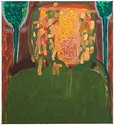
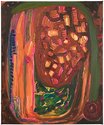
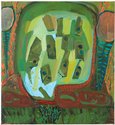
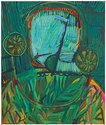
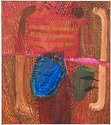
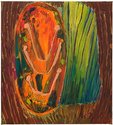
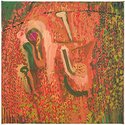
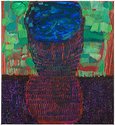
 Advertising in this column
Advertising in this column Two Rooms presents a program of residencies and projects
Two Rooms presents a program of residencies and projects



This Discussion has 0 comments.
Comment
Participate
Register to Participate.
Sign in
Sign in to an existing account.